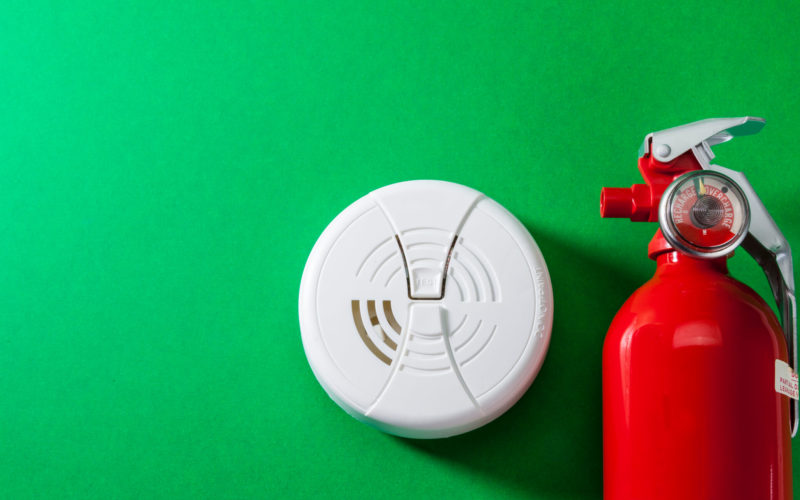September is National Preparedness Month, promoting awareness of the importance of planning ahead in the event of disasters like home fires.
Most people don’t realize how swiftly a small fire can become a serious threat, so preparing ahead is essential. According to Ready.gov, a national public service campaign designed to educate Americans on disaster preparedness, a small flame can turn into a major fire in less than 30 seconds. In just two minutes, a fire can become life-threatening. In five minutes, a home can be engulfed in flames.
We’ve combed through fire preparedness information to highlight some great tips to create your own fire escape plan.

Fire Escape Planning
- Take time to walk around your home with your family and identify at least two ways to escape from each room.
- Establish an outside meeting place, such as a tree, mailbox, or light pole, to unite after exiting your home.
- Make sure everyone knows how to call 9-1-1.
- Rehearse your escape plan at different times of the day at least twice each year. Practice waking up in bed to the sound of smoke alarms, low crawling to stay below smoke, then quickly running to the meeting place.
- Practice doing the stop-drop-and-roll technique to use if clothes are on fire.
- All family members should know to never open doors if the handles are warm. If flames or heat block their first exit route, instruct them to try to quickly get out through the second exit.
- If both ways out are blocked by heat, flames or smoke, those trapped should try quickly covering the vents and placing a wet towel under the door, if possible. Call 9-1-1 and wave a bright-colored cloth near a window to signal for help.
- Time your fire drill and aim for having everyone out and at the meeting place in two minutes or less.
- Develop a plan for removing pets, and emphasize to your family that they must get out and stay out. Never go back into a burning building.
- Make sure your house number is visible from the street.
- Train family members old enough to handle a fire extinguisher how to use it properly.
Two Essentials to Fight Home Fires
Fire Extinguishers
No home should be without a fire extinguisher or smoke detectors when it comes to fire safety. Fire extinguishers should only be used by those who have been trained to handle them, and only after you have called 9-1-1. They are most useful if you are fighting a small fire that is not escalating, the room is not filled with smoke and the fire department is on the way. Check out these tips for choosing and using the right fire extinguisher.
Smoke Detectors
Smoke detectors are often the first signal that a fire may be breaking out in your home. Make sure to check them once a month (by pushing the test button) and replace the batteries once or twice a year. Compare these smoke detectors from the Safewise buyer’s guide of best smoke alarms of 2021.
More Fire Prevention Resources
For more information and tips to prevent home fires, check these resources:
- National Fire Protection Association: Download a free fire escape planning grid and a safety tip sheet, with more suggestions for your own escape plan.
- Ready.gov: Find more information about practicing your own fire drill.
- Red Cross Fire Prevention & Safety Checklist: Read this handy list that emphasizes home fire prevention, fire safety at home and the importance of having an escape plan.
Protect Your Home with Quality Homeowners Insurance
Make sure that your home is properly insured against fire with a high quality, affordable policy from Farm Bureau Insurance. Get in touch with an agent today to learn more.

